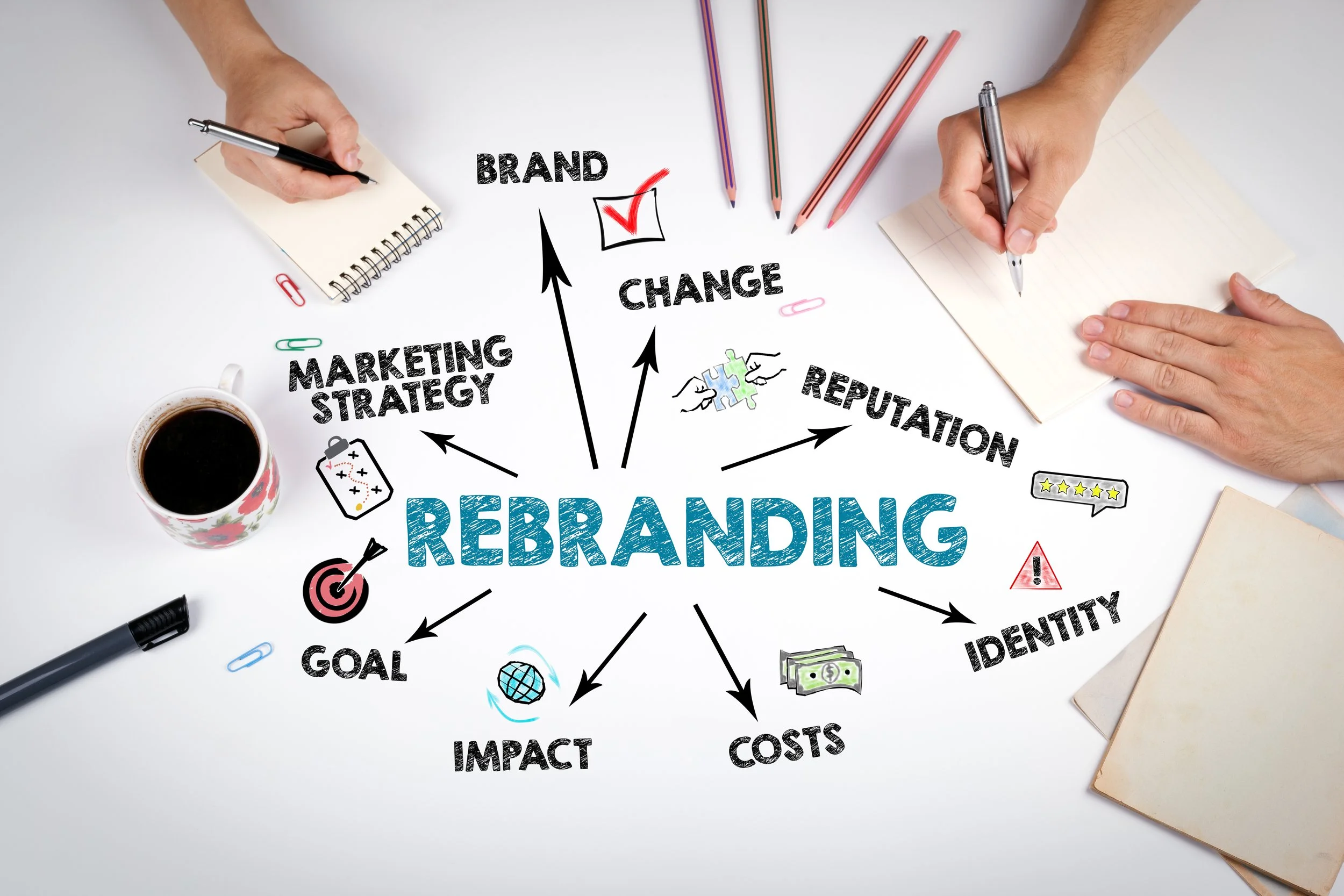02/08/2025
Is It Time for a New Identity? The Pros and Cons of Rebranding Your Company
In today's dynamic and competitive marketplace, a company's brand identity is one of its most critical assets. However, as organizations evolve and market conditions shift, the original brand message might no longer reflect the company’s present values, offerings, or the perceptions of its customers. This discrepancy prompts a crucial question for every business leader and marketing professional:
Is it time to rebrand?
Rebranding is not just about refreshing your logo or changing your company's color scheme; it's about reviving your company's story and realigning it with your current and future direction. This process can breathe new life into a company, but it can also present significant challenges. Let’s dive into the pros and cons of rebranding and understand whether it's the right move for your company.
pros of rebranding
Stay Relevant: Markets evolve, and so do customer preferences. Rebranding allows a company to stay current and relevant in a fast-paced world, ensuring its message resonates well with its target audience.
Reflecting Growth and Evolution: As companies expand their offerings or shift their focus, rebranding can more accurately reflect these changes, showcasing the company's growth and evolution to customers.
Differentiating from Competitors: In crowded markets, a fresh brand identity can help a company stand out from its competitors, highlighting its unique value proposition.
Revitalize Your Image: For businesses struggling with outdated perceptions or past controversies, rebranding offers a way to break from the past, presenting a new and positive image to the world.
Attract New Audiences: A rebrand can help businesses tap into new markets or demographics, tailoring their message to appeal to a broader or entirely different audience.
CONS OF REBRANDING:
Risk of Alienating Current Customers: If not executed carefully, rebranding can confuse or alienate existing customers who were loyal to the original brand identity.
Cost Implications: Rebranding is an investment. From designing new logos and marketing materials to implementing the brand across all platforms, the costs can add up quickly.
Lost Brand Equity: Established brands carry equity built over years of customer interactions. Rebranding risks losing this built-up equity if the transition moves too far from what customers have grown to trust.
Implementation Challenges: Rolling out a new brand identity across all channels and ensuring consistency can be a complex and time-consuming process.
Potential for Mixed Messages: During the transition phase, there's a risk of sending mixed messages to the market, which could dilute the brand's effectiveness.
Balancing the Scales
Deciding to rebrand is no small undertaking, and the choice should be weighed against the potential risks and rewards. It requires a clear understanding of your company's current standing, future direction, and the ability to execute the rebrand effectively across all touchpoints. If your company is experiencing significant changes in its mission, target audience, or the market landscape, and you're facing challenges that a refreshed brand identity could solve, rebranding might be the way forward. However, proceed with caution, ensuring that any changes will resonate with both new and existing customers alike.
In the dynamic dance of business, staying in step with the times while maintaining the essence of your brand is crucial. Is it time for your company to step onto the floor with a new rhythm? The decision to rebrand should come after careful consideration of both the tangible and intangible assets of your current brand, balanced against the potential for growth and renewed relevance in your market.

